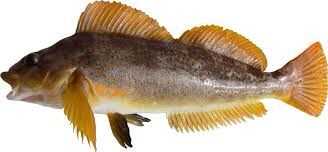Kelp Greenling

Species Details
Hexagrammos Decagrammus
Hexagrammidae
Scorpaeniformes
Inshore
2 - 5 lbs.
15" - 24"
Kelp Greenling (Hexagrammos decagrammus) Fish Description
Also known as seatrout, rock trout, spotted rock trout, kelp cod, boregat, kelp trout, and greenling seatrout, the Kelp Greenling was first called by the name Bodieron by some Portuguese fishermen.
Kelp Greenlings have conical heads and elongated bodies. Both male and female Kelp Greenlings are generally colored dark-gray to brown; the inside of their mouths is yellowish. However, they differ in terms of their spots. Female Kelp Greenlings have uniformly distributed golden, reddish-brown round spots and yellow-orange fins, whereas the males have sky-blue spots on their sides and head. These spots have reddish-brown rings around them.
They have 21-22 dorsal spines and 24 dorsal soft rays. They possess only 1 weak anal spine with 23-24 anal soft rays.
Diet and Size
Kelp Greenlings like mollusks, sea worms, brittle stars, crustaceans, and small fishes. The other favorites of this benthic species are algae, snails, abalones, crabs, shrimp, fish eggs, and octopus.
Kelp Greenlings can grow up to 21 inches; on average, they measure around 15 inches only. They commonly weigh around 2-4 pounds. They are said to live as long as 21-25 years of age.
Interesting Facts About the Kelp Greenling
- Strangely, male Kelp Greenlings inseminate eggs in the nests of other males; this is part of their unique mating ritual.
- The Kelp Greenling derived its name from the Greek words hex meaning ‘six’, gramma meaning ‘line’, and deca meaning ‘ten’.
- Kelp Greenlings are highly valued by Aleut Indians who call them idyajuk.
Fishing Techniques
Anglers can catch this species of fish using hook and line from the shore. They are best caught by placing a line near areas with current breaks like the base of kelp forests, pilings, seawalls, or rocky shorelines — especially when there is a tide coming. Anglers may use medium spinning tackles with an abrasion-resistant fusion line.
Clams, shrimp, mussels, worms, squid, and pieces of fish may be used as bait. Anglers can also try feathered jigs with squid at the tip. It must be noted that Kelp Greenlings are hard to land because they tend to fight the anglers’ lines and entangle them in kelp. The best fishing ground for Kelp Greenlings is in northern California, specifically the south jetty at Eureka.
Luckily for anglers, Kelp Greenlings bite any kind of bait in general, making them part of the most common catch of a regular fisherman. It is best to fish for Kelp Greenlings during their spawning season which runs from October to November.
Sometimes, Kelp Greenlings are speared by divers. They are also victims of bycatch where fishermen accidentally catch them when fishing for other species. Some anglers consider them a nuisance despite having very tasty meat.
Habitat and Distribution
This species of fish prefers inshore areas, sandy bottoms, and shallow waters as habitat. They like deep and cool waters, especially in southern California. Usually, they are found on kelp beds as deep as 150 feet. Adult Kelp Greenlings do not migrate since they are territorial.
Kelp Greenlings are commonly found in central and northern California. They thrive in waters from La Jolla to Attu Island in Alaska.







